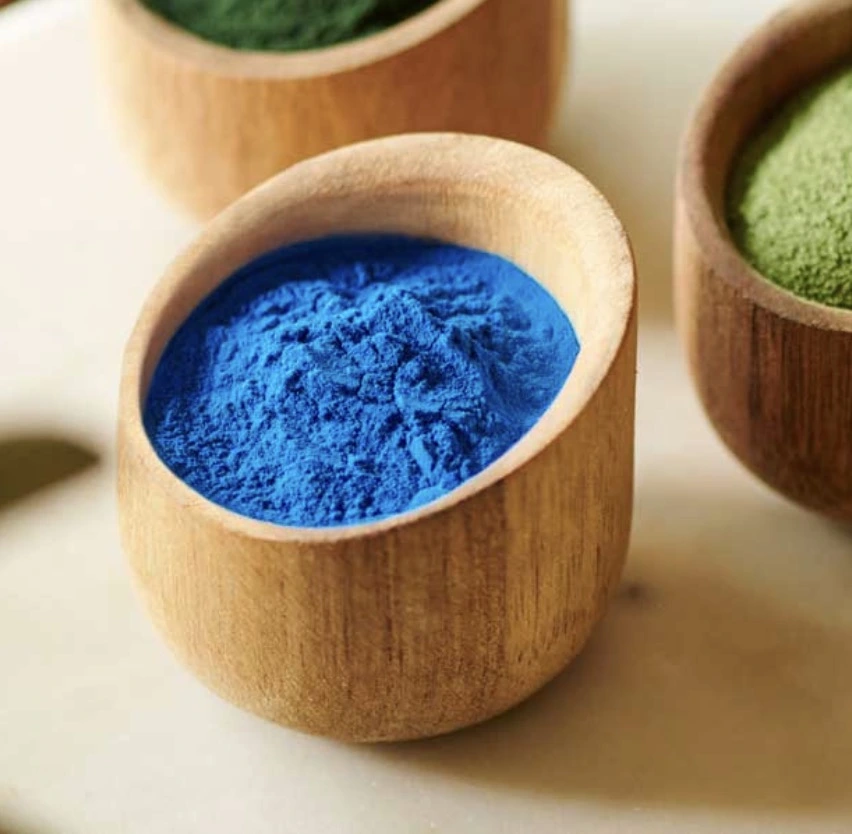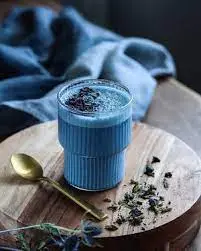Chlorophyll: The Ultimate Green Superfood for Cleansing & Health Benefits
Is chlorophyll really the ultimate green superfood for cleansing and health benefits? The vibrant green pigment found in plants, mindful of photosynthesis, has earned significant consideration for its potential positive effect on human well-being. Past its vital part in the plant kingdom, chlorophyll offers a range of implied benefits, from supporting detoxification pathways to possibly boosting vitality levels and advancing solid skin. Whereas investigation is continuous, and more large-scale human ponderings are continuously important, existing proof recommends that chlorophyll and its subsidiary chlorophyllin have antioxidant and anti-inflammatory properties. These characteristics support numerous of its claimed benefits, making it a prevalent expansion to juices, smoothies, and dietary supplements. Devouring chlorophyll-rich nourishments or supplements may help the body in eliminating poisons, progressing digestive wellbeing, and contributing to general well-being.

Understanding Chlorophyll: Nature's Green Pigment
The Chemistry and Types of Chlorophyll
Chlorophyll, at its core, is a chlorin pigment, fundamentally comparable to heme found in hemoglobin. The key distinction lies in the central metal atom: chlorophyll contains magnesium, while heme contains iron. This magnesium particle is basic for chlorophyll's work in photosynthesis, the process by which plants change over light energy into chemical energy in the frame of sugars. There are a few sorts of chlorophyll, the most common being chlorophyll a and chlorophyll b. Chlorophyll a is the essential color included in photosynthesis, retaining generally violet-blue and orange-red light. Chlorophyll b is an adornment color, retaining basically blue light and exchanging the vitality it retains to chlorophyll a. The shifting proportions of these chlorophyll sorts, along with other adornment colors like carotenoids, contribute to the different shades of green observed in the plant kingdom.
Chlorophyll's Role in Photosynthesis and Plant Life
Photosynthesis, the engine of life for plants and a critical parcel of the Earth's oxygen generation, pivots on chlorophyll's special properties. Chlorophyll molecules are found inside chloroplasts, specialized organelles in interior plant cells. When light strikes a chlorophyll particle, it energizes electrons to a higher vitality level. This energized electron is at that point passed along an electron transport chain, an arrangement of protein complexes inside the chloroplast. As the electron moves, vitality is discharged and used to make a proton gradient, which eventually drives the amalgamation of ATP (adenosine triphosphate), the cell's vitality money. At the same time, chlorophyll plays a role in splitting water molecules, discharging oxygen as a byproduct. This oxygen is the very air we breathe.
Sources of Chlorophyll in Food and Supplements
The most promptly accessible sources of chlorophyll are, obviously, green vegetables. Dark verdant greens like spinach, kale, collard greens, and Swiss chard are uncommonly rich in chlorophyll. Other excellent sources incorporate parsley, cilantro, broccoli, green beans, peas, and spirulina, a type of blue-green green growth. Chlorella, another type of algae, is moreover a strong source, regularly found in supplement form. For those seeking concentrated measurements, chlorophyll supplements are broadly accessible. These supplements regularly contain chlorophyllin, a semi-synthetic, water-soluble subordinate of chlorophyll. Chlorophyllin is accepted to be more steady and bioavailable than common chlorophyll, meaning it may be more promptly retained and utilized by the body. Be that as it may, it's significant to note that the handling and extraction strategies used to make chlorophyllin can shift, affecting its quality and adequacy.
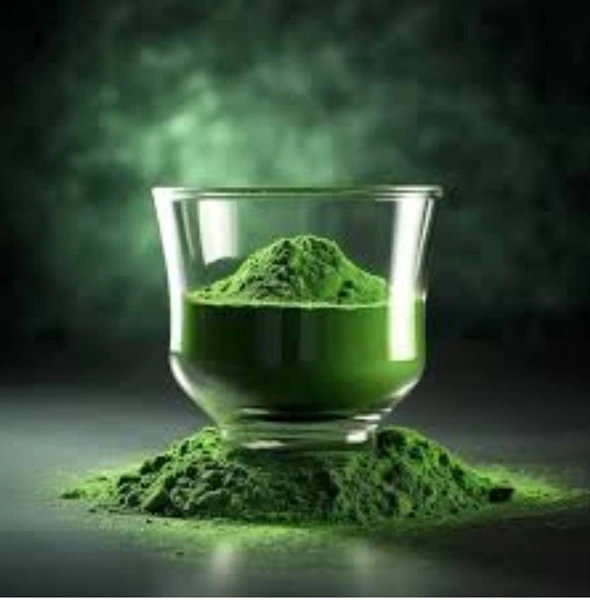
Detoxification Benefits of Chlorophyll
Chlorophyll's Role in Supporting Liver Function
The liver is the body's primary detoxification organ, dependable for filtering poisons from the blood, processing supplements, and creating bile. Chlorophyll and chlorophyllin have appeared promising in supporting liver wellbeing. A few consider recommend that chlorophyllin can bind to certain poisons, including aflatoxins, which are carcinogenic compounds delivered by certain molds found in nourishment. By official to these poisons, chlorophyllin may help anticipate their assimilation in the digestive tract, decreasing the burden on the liver. Furthermore, chlorophyll's antioxidant properties may help ensure liver cells are protected from damage caused by free radicals, unsteady particles that can contribute to aggravation and cellular damage. Whereas more human research is needed, these preparatory discoveries show chlorophyll's potential part in advancing liver detoxification forms.
Binding and Eliminating Toxins in the Digestive Tract
Beyond its potential effects on the liver, chlorophyll may moreover aid in detoxification inside the digestive tract itself. As said prior, chlorophyllin can bind to certain poisons, like aflatoxins, in the intestine. This binding activity can avoid these poisons from being ingested into the bloodstream and subsequently reaching other organs. This is especially important in districts where aflatoxin defilement of nourishment crops is a concern. Additionally, chlorophyll's capacity to advance solid assimilation, which will be discussed afterward, can indirectly contribute to detoxification. A well-functioning digestive framework is fundamental for dispensing with waste items and poisons effectively. By supporting regular bowel developments and a solid intestine microbiome, chlorophyll can contribute to the body's natural elimination processes.
Chlorophyll and Heavy Metal Detoxification (with Cautions)
The topic of heavy metal detoxification and chlorophyll is a complex one, requiring cautious thought. A few sources claim that chlorophyll, especially chlorella, can help remove overwhelming metals like mercury, lead, and cadmium from the body. Whereas there is a little in vitro (test tube) and animal research recommending that chlorella can bind to overwhelming metals, the proof in people is restricted and uncertain. It's significant to approach this claim with caution. Overwhelming metal poisoning is a genuine restorative condition that requires determination and treatment by qualified healthcare experts. Depending exclusively on chlorophyll or chlorella for overwhelming metal detoxification is not suggested and may be dangerous.
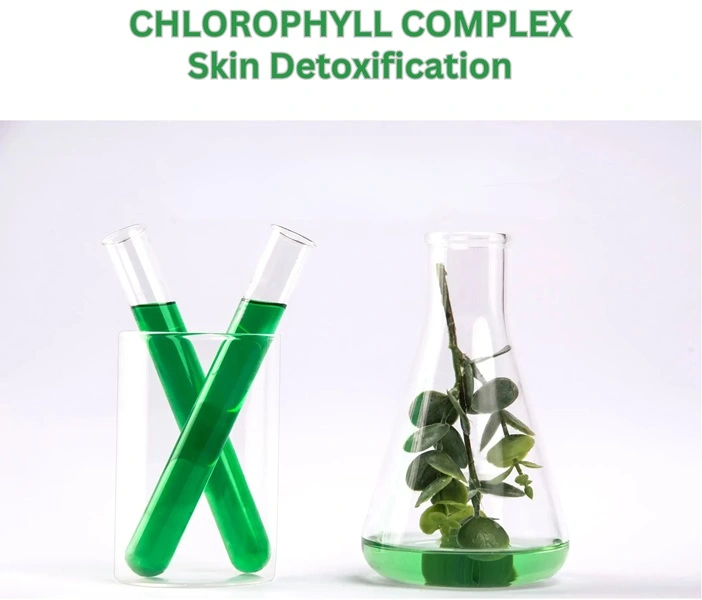
Boosting Energy and Vitality with Chlorophyll
Chlorophyll's Potential Impact on Red Blood Cell Production
One intriguing area of research explores chlorophyll's potential association with red blood cell generation. As said prior, chlorophyll's structure is remarkably comparable to that of heme, a component of hemoglobin, the protein in red blood cells responsible for carrying oxygen. This auxiliary similarity has driven speculation that chlorophyll consumption might bolster ruddy blood cell arrangement. While direct proof showing that chlorophyll changes over specifically to hemoglobin is missing, a few studies propose that chlorophyllin may fortify the generation of ruddy blood cells in people with certain sorts of frailty. Be that as it may, it's vital to note that these studies are relatively little, and more investigation is needed to affirm these discoveries and understand the basic instruments.
Oxygenation and Cellular Energy
The link between chlorophyll and oxygen is characteristic in its role in photosynthesis. Whereas chlorophyll doesn't straightforwardly increment oxygen levels in the blood in the same way it does in plants, its potential to back ruddy blood cell generation, as discussed above, might indirectly contribute to improved oxygen conveyance to tissues. Satisfactory oxygen supply is significant for cellular vitality generation. The mitochondria, the powerhouses of cells, utilize oxygen to deliver ATP, the vitality money that fuels cellular forms. If chlorophyll admissions, through diet or supplementation, were to contribute to improved oxygen transport and conveyance, it seems, in hypothesis, to have a positive impact on cellular vitality levels.
Antioxidant Effects and Reducing Fatigue
Chlorophyll, and particularly chlorophyllin, have significant antioxidant properties. Antioxidants combat free radicals, unsteady atoms that can damage cells and contribute to aggravation and fatigue. By neutralizing free radicals, chlorophyll may help secure cells from oxidative stress, a condition linked to different wellbeing issues, including constant fatigue. Decreasing oxidative push can, in theory, contribute to progressed vitality levels and overall imperativeness. Be that as it may, it's imperative to recognize that weakness is a complex indication with numerous potential causes, extending from basic therapeutic conditions to lifestyle variables like rest hardship and destitute calorie counts. Whereas chlorophyll's antioxidant properties may offer some advantage, it's impossible to be a single arrangement for fatigue.
Supporting Digestive and Gut Health
Chlorophyll's Influence on Gut Microbiota
The gut microbiota, the trillions of microbes and other microorganisms dwelling in the digestive tract, plays a vital part in overall well-being, counting assimilation, insusceptibility, and even mental well-being. Rising research recommends that chlorophyll and chlorophyllin may have a positive impact on the composition and work of the intestine microbiota. A few studies show that chlorophyllin can advance the development of beneficial microbes while restraining the development of hurtful microbes. This modulation of the gut microbiome may contribute to improved digestive wellbeing and diminished aggravation in the gut.
Reducing Inflammation in the Digestive Tract
Inflammation in the digestive tract is a trademark of different gastrointestinal disorders, including provocative bowel infection (IBD). Chlorophyll's antioxidant and anti-inflammatory properties may offer a few advantages in diminishing gut irritation. Studies, essentially in animal models and in vitro, have shown that chlorophyllin can stifle the generation of provocative compounds in the gut. This anti-inflammatory impact could contribute to easing symptoms related to digestive disorders. In any case, it's significant to emphasize that IBD and other digestive conditions require comprehensive therapeutic administration. Chlorophyll should not be considered a substitution for endorsed solutions or other treatments. It may possibly serve as a complementary approach, but continuously beneath the direction of a healthcare proficient.
Alleviating Digestive Discomfort: Bloating and Gas
Some individuals report experiencing relief from digestive discomfort, such as bloating and gas, after consuming chlorophyll-rich foods or supplements. While the exact mechanisms are not fully understood, several factors may contribute to this effect. Chlorophyll's potential to improve gut motility (the movement of food through the digestive tract) and support a healthy gut microbiome could play a role. Additionally, its anti-inflammatory properties might help reduce inflammation in the gut, which can contribute to bloating and discomfort. However, more research is needed to specifically investigate chlorophyll's effects on these common digestive complaints. It's also important to note that individual responses can vary, and what works for one person may not work for another.
Chlorophyll as a Skin Health Enhancer
Antioxidant Protection Against Skin Damage
The skin, as the body's largest organ, is constantly exposed to environmental stressors, including ultraviolet (UV) radiation from the sun and pollutants. These stressors generate free radicals, which can damage skin cells, leading to premature aging, wrinkles, and other skin problems. Chlorophyll's potent antioxidant properties can help protect skin cells from this oxidative damage. By neutralizing free radicals, chlorophyll may help maintain skin elasticity, reduce the appearance of wrinkles, and promote a healthy complexion. This protective effect is one of the primary reasons why chlorophyll and chlorophyllin are increasingly being incorporated into skincare products.
Anti-inflammatory Effects on Skin Conditions
Inflammation plays a significant role in various skin conditions, including acne, eczema, and rosacea. Chlorophyll's anti-inflammatory properties may offer some benefit in managing these conditions. Studies have shown that chlorophyllin can reduce inflammation in skin cells and may help alleviate symptoms like redness, itching, and irritation. Some research suggests that topical application of chlorophyllin can be particularly effective in reducing acne breakouts. However, more clinical trials are needed to fully understand the extent of chlorophyll's benefits for specific skin conditions and to determine optimal dosages and application methods. It's important to consult with a dermatologist for diagnosis and treatment of any skin condition.
Wound Healing and Tissue Repair
Chlorophyll has a long history of traditional use in promoting wound healing. Some evidence suggests that chlorophyllin can accelerate tissue repair and reduce bacterial growth in wounds. The mechanisms behind this effect are not fully elucidated, but may involve chlorophyll's ability to stimulate cell growth and reduce inflammation. Chlorophyllin's potential antibacterial properties could also help prevent infection in wounds. While promising, more rigorous scientific studies are needed to confirm these benefits and establish standardized protocols for using chlorophyll in wound care. It's crucial to follow established medical guidelines for wound management and to consult with a healthcare professional for any serious wounds or infections.
Incorporating Chlorophyll into Your Wellness Routine
Dietary Sources: Eating Your Greens
The most natural and readily accessible way to increase your chlorophyll intake is to focus on consuming plenty of green vegetables. As mentioned earlier, dark leafy greens like spinach, kale, collard greens, and Swiss chard are exceptionally rich in chlorophyll. Aim to incorporate these greens into your daily diet. You can add them to salads, smoothies, soups, stews, or stir-fries. Other good sources include parsley, cilantro, broccoli, green beans, and peas. The greater the variety of green vegetables you consume, the broader the range of nutrients you'll obtain, including not only chlorophyll but also vitamins, minerals, and fiber.
Chlorophyll Supplements: Choosing Wisely
If you find it difficult to consume enough chlorophyll-rich foods, or if you're seeking a more concentrated dose, chlorophyll supplements are an option. These supplements are typically available in liquid, capsule, or tablet form. Most chlorophyll supplements contain chlorophyllin, the water-soluble derivative of chlorophyll. When choosing a supplement, prioritize quality and purity. Look for reputable brands that source their chlorophyll from high-quality ingredients and use minimal processing. Read labels carefully and avoid supplements with unnecessary additives or fillers. It's also advisable to consult with a healthcare professional before starting any new supplement, especially if you have any underlying health conditions or are taking medications.
Practical Tips and Recipes
Incorporating chlorophyll into your daily routine can be both easy and enjoyable. Here are some practical tips and recipe ideas:
- Green Smoothies: Blend spinach, kale, or other leafy greens with fruits like bananas, berries, and mangoes for a delicious and chlorophyll-rich smoothie.
- Green Juices: Use a juicer to extract juice from chlorophyll-rich vegetables like spinach, kale, celery, and cucumber.
- Salad Dressings: Add a few drops of liquid chlorophyll to your favorite salad dressing for an extra boost of green goodness.
- Soups and Stews: Add chopped leafy greens to soups and stews during the last few minutes of cooking to preserve their chlorophyll content.
- Pesto: Make a vibrant green pesto using parsley, basil, or other chlorophyll-rich herbs.
- Chlorophyll Water: Add a few drops liquid Chlorophyll into water.

Conclusion
Chlorophyll, the vibrant green pigment essential for plant life, offers a range of potential health benefits for humans. From supporting detoxification and boosting energy to promoting digestive health and enhancing skin, chlorophyll's antioxidant and anti-inflammatory properties make it a compelling addition to a wellness-focused lifestyle. While research is ongoing, and more human studies are needed to fully elucidate its mechanisms and effects, incorporating chlorophyll-rich foods or considering a high-quality supplement may contribute to overall well-being. Remember to prioritize a balanced diet, consult with healthcare professionals when necessary, and approach chlorophyll consumption as part of a holistic approach to health.
Yangge Biotech Co., Ltd. is dedicated to providing high-quality, natural plant extracts for the food and beverage, dietary supplement, and superfood industries. We are ISO, HACCP, Kosher, and Halal certified, ensuring the highest standards of quality and safety. Our dedicated R&D and production teams, along with our 24-hour online service, are committed to providing innovative, natural raw material solutions to meet the evolving needs of our customers. We offer a wide range of products, including botanicals, herbs, vitamins, minerals, and, of course, high-quality chlorophyll options. Whether you are a food manufacturer, ingredient distributor, or food service provider, Yangge Biotech has the ingredients you need to create exceptional products. Contact us today to learn more: info@yanggebiotech.com.
References
1. National Institutes of Health (NIH). "Chlorophyll and Its Health Benefits."
2. Journal of Medicinal Food. "Antioxidant and Anti-Inflammatory Properties of Chlorophyll."
3. Food Chemistry. "Chlorophyll as a Natural Food Colorant: Applications and Benefits."
4. International Journal of Molecular Sciences. "The Role of Chlorophyll in Detoxification and Liver Health."
5. Nutrients. "Chlorophyll and Its Impact on Gut Microbiome and Digestive Health."
6. Dermatology Research and Practice. "Chlorophyll in Skincare: Benefits and Applications."

Based on your location and order quantity, you will have the opportunity to receive a limited time free shipping promotion!
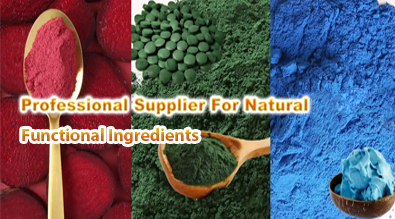
Who we are

